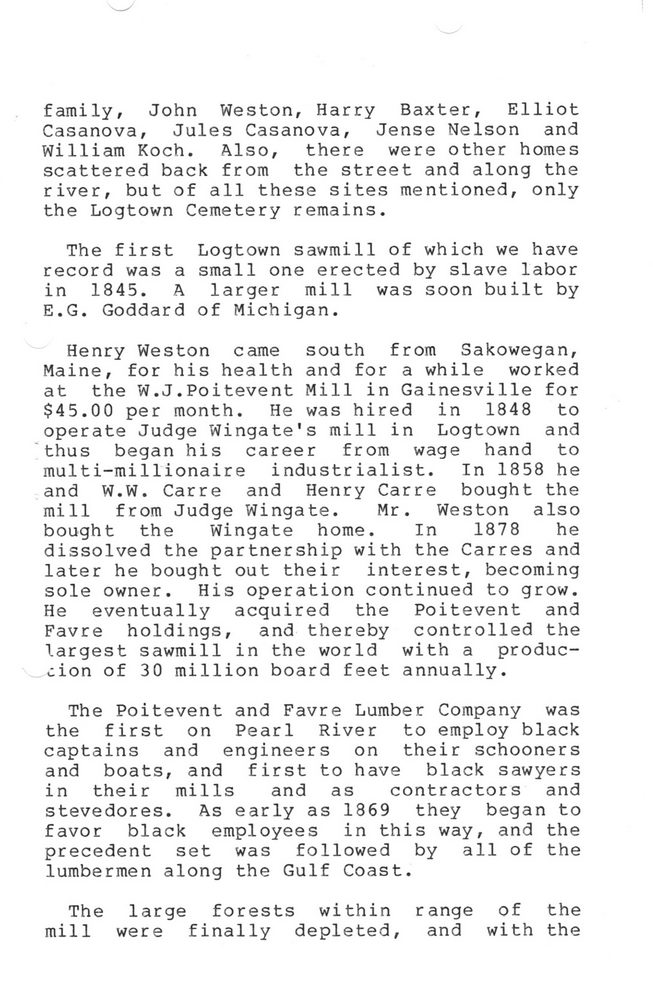This text was obtained via automated optical character recognition.
It has not been edited and may therefore contain several errors.
family, John Weston, Harry Baxter, Elliot Casanova, Jules Casanova, Jense Nelson and William Koch. Also, there were other homes scattered back from the street and along the river, but of all these sites mentioned, only the Logtown Cemetery remains. The first Logtown sawmill of which we have record was a small one erected by slave labor in 1845. A larger mill was soon built by E.G. Goddard of Michigan. Henry Weston came south from Sakowegan, Maine, for his health and for a while worked at the W.J.Poitevent Mill in Gainesville for $45.00 per month. He was hired in 1848 to operate Judge Wingate's mill in Logtown and thus began his career from wage hand to multi-millionaire industrialist. In 1858 he and W.W. Carre and Henry Carre bought the mill from Judge Wingate. Mr. Weston also bought the Wingate home. In 1878 he dissolved the partnership with the Carres and later he bought out their interest, becoming sole owner. His operation continued to grow. He eventually acquired the Poitevent and Favre holdings, and thereby controlled the largest sawmill in the world with a production of 30 million board feet annually. The Poitevent and Favre Lumber Company was the first on Pearl River to employ black captains and engineers on their schooners and boats, and first to have black sawyers in their mills and as contractors and stevedores. As early as 1869 they began to favor black employees in this way, and the precedent set was followed by all of the lumbermen along the Gulf Coast. The large forests within range of the mill were finally depleted, and with the

Logtown Logtown booklet HCHS (08)